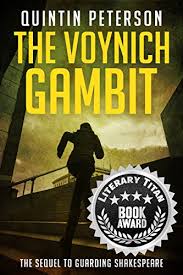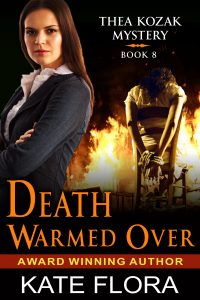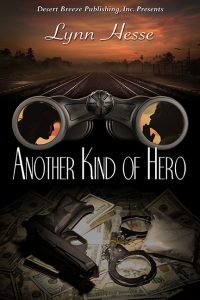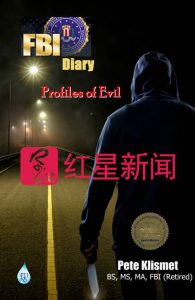PSWA Newsletter
December 2017
PRESIDENT’S MESSAGE
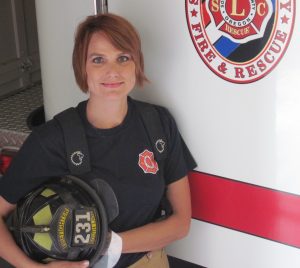
Wow, the Holidays are here again. I had an enormous feast with my two boys, my oldest son’s delightful long-term partner and my dad the day before Thanksgiving. Many of us in public safety understand this need to have a celebration whenever our schedule permits. Due to my son’s graveyard schedule and my on-call child and adolescent crisis work, it made sense to eat together when we could, not when the calendar said we should. I’m sure we joined a number of law enforcement, fire and EMS families around the country in this. Regardless of the day, it was a beautiful celebration especially since I have so much to be thankful for.
Now that the mess is cleaned up and my fridge is stocked well enough to feed a small country, I’m turning towards Christmas as that’s the holiday my family celebrates. I’ve already decided against a tree again this year. Last year, two small kittens had just joined our family and this year they are just over a year old and still neurotic. I have no interest in cleaning up broken ornaments and tree branches every day for the next 30 days. Therefore we will improvise again with some green velvet and bush lights hanging from a curtain rod, presents nestled happily at the bottom to keep it from being a kitty hiding/ninja-pouncing place.
Speaking of presents, what are you planning on getting your loved ones this year? Not another tie or socks (although I love socks). What about getting them something that will expand their minds, take them to new places, help them meet new people and go on adventures? All while supporting your fellow PSWA members? How? Books!! So many of our members have amazing books published. There’s something for everyone from non-fiction, like Piercing the Lion Heart by J. Andre Boles or Helicopter Hayes by Bruce O’Rourke to fiction, such as The Most Dangerous Species by Mar Preston or Murder: A New Way to Lose Weight by J.L. Greger. These were the 2017 and 2016 Published Fiction and Non-Fiction PSWA contest winners. Our judges found them fabulous; your gift recipients will too. And there are so many more. Keep an eye on the list serve as many of our authors are hawking their wares this time a year. Join them if you have an offering and you haven’t already. People want your words!!
But what about you? I’ve been my primary gift giver for many years and appreciate the fact I ALWAYS get what I want. So, what would make a great gift for yourself this year? How about registration for the 2018 PSWA Writing Conference? You’ll be buying yourself an experience you won’t regret. The friendship, networking and information you will gain at this conference are second to none. Early bird registration goes through December 31st.
Even though it seems like just yesterday we were ringing in 2017 and now we’re in the shadow of 2018, I hope it’s been a good, productive year for all of our members. My year is ending much different than I would have imagined but the journey has been an adventure with much reflection and growth. I will be entering 2018 with a new appreciation for health and the love of and for family and friends. I will also be writing. I hope you’ll join me. Happy Holidays and a Happy New Year.
–Michelle J.G. Perin, MS, QMHP, EMT
President, PSWA
VICE-PRESIDENT’S MESSAGE
RECRUITMENT AND MEMBERSHIP EFFORTS
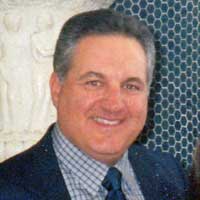
One of the things I’ve realized since I took on the membership/recruitment duties of the PSWA is that it is a constant job. Each member’s year starts from the date we receive their dues payment, so there are several renewals due during each month of the year. Consequently, that requires a bit of time on the computer sending out those pesky renewal notices, which cuts into the time needed for active recruitment of new members.
Currently, I am following ten writer’s organizations on Facebook and have posted several PSWA and conference notices at those sites, plus shared some of our author’s insights and accomplishments. I get very little feedback or comments from these posts so it is hard to judge their effectiveness. But I have to think at the very least, it has helped raise awareness of the PSWA.
Our membership roster is very fluid. Some are moved to inactive due to no response to at least three renewal notices, while others reply to the renewal notice declining to renew for a variety of reasons. We get new members joining every so often, usually due to word of mouth recommendations of our members.
The problem is, it appears we have lost more members this year than new members who have joined. Not to worry, yet, as we still have a very active 140 person membership. We just need to ramp up our recruitment efforts.
A couple of weeks ago I sent out a request to our membership to help by giving out PSWA business cards whenever they attend a writer’s event, book event, writer’s conference, or speaking engagement. I asked members to contact me so I could send them the business cards and so far have gotten just three replies, and I gratefully thank those members (you know who you are!) I also sent the same post to twelve other face book writer’s/writing accounts. I pass on other members posts regarding PSWA on Facebook and Twitter, and have notice several other members have been doing the same.
Recruitment is not the job of just one member. It should be a cooperative effort of all our members. With a concentrated effort we may see more new members and, hopefully, an increase in membership.
Now, I know not everyone will participate and that’s OK, but I would hope more members will contact me. I know there are a lot of members who belong to other writer’s groups, critique groups, attend events all over the country and attend other writer’s conferences. It would help with recruitment to distribute the cards and talk up our conference. All you need to do is message me with your address and how many cards you want and I will mail them out right away. I also encourage our membership to advertise PSWA on their social media pages- Facebook, Twitter, Instagram, etc. Imagine how many writers will get that info if a bunch of us do that!
I will keep up my efforts, too, and if any of you have suggestions for promotion or recruitment please send them to me via email or messenger.
Let’s all do whatever we can to keep the PSWA the best writer’s group ever!
–John Schembra
Vice-President, PSWA
THE GAME’S AFOOT

As the holiday season approaches so does the expiration of the early-bird pricing discount for the 2018 PSWA Conference. (See the PSWA conference page for the prices.) This will be our 13th year and thus the working tag line title is “The Baker’s Dozen.” The 2017 conference was the perfect storm of mishaps, but we got through it okay. Appropriately enough, as I write this, I find myself embroiled in a real tight race with two novel-length manuscripts due in mid-December. Thus, by the time you read this, I’ll either have beaten them both, or not. I know I wouldn’t have had a chance to do it had I not chosen to rely on the tried and true method of doing a detailed outline before I started writing. Thus, instead of devoting this article to trying to tell you how great the 2018 conference will be, I’ve decided instead to write about outlining.
From a writer’s standpoint, I usually like to figure these things out before I start writing. I’m what you call a plotter. There’s another type of writer who likes to let the characters lead them through the story and look forward to discovering who knew what and when and why as they forge ahead. These writers are called “pantsers,” because they write by the seat of their pants. Now, while neither technique is “right or wrong,” each has its own advantages and disadvantages.
Pantsers always say how much fun it is to sit down and see where those muses will lead you, and I agree. It is a lot of fun. The characters are usually very engaging because there’s a degree of uncertainly imbued into them. I used to write that way, back when I was a college undergrad. I’d sit down and write that first line, having no idea where it would lead. Soon I’d be enjoying the ride as the characters popped up and the story began to unfold. It usually didn’t take me long, however, to realize that I’d either gone off on a tangent or written myself into a corner. The only way out was to go back and see where I’d gotten off track and toss out all the stuff that developed after that point. One of the nice things about computers is you can always copy this extraneous stuff and put it into a special file that you can call up for another project. But the sad fact remains that if you’re a pantser, you’ll more than likely run into this problem of going off on a tangent. This goes hand in hand with writing yourself into a corner. Remember that old cartoon about the guy who was painting the floor and was making such good progress that he kept backing up until he realized he’d painted away from the only exit and was now stranded against a wall in a small, unpainted section. If you don’t know where you’re going when you start painting, it’s easy to do.
Plotters, on the other hand, do a lot of thinking before they even start writing. Oftentimes, they do an outline, which lays out the story in some sort of fashion. This may be a scene-by-scene chronology, or it may be something as simple as a one sentence description of what happens in that particular chapter. Regardless, outlining is sort of like writing a first draft in your head, and then putting it down on paper. And let me hasten to add that these outlines shouldn’t be chiseled in stone. When I do an outline it always remains flexible. While I usually have the basic structure of the story down, it’s always subject to change if, during the writing journey, I see an interesting possibility pop up. Case in point: I just revised the outline for the project I’m currently working on after realizing the pacing was a tad off. That’s another benefit of having an outline. It shows you how the story is laid out, and if the plot is flagging at any point, you can easily spot it and make the adjustment. They also help you get started each day. When I sit down to start writing in the morning, I merely have to look at my outline to see exactly where I’m at in the story, and know where I have to go in the next scene. No writer’s block there.
It’s been said, erroneously so, that outlines tend to produce works that are rigid and wooden. It’s also said that they stifle creativity. I’ve found both of these statements to be false. As I previously stated, doing an outline is basically writing a first draft and working out the plot. That doesn’t necessarily lend itself to rigidity or woodenness. If you take the time to work out the plot beforehand, and know where you’re going and why, you won’t be writing yourself into a corner as you get near the end asking who and what. I use the simple analogy of a road map. Plan the route you want to take knowing the final destination, and you’ll be a lot less likely to get lost. And if, during the journey, you realize that you want to change the route, you can always do so. You’ll waste less time by planning ahead, and ultimately produce more work. It’ll also give you more time to revise and polish your prose.
Once again, neither process is wrong, although I feel that outlining is superior. However, since writing is an individual endeavor, I always encourage writers to find what fits best for them. It’s also supposed to be fun, so make sure it is.
These are the types of things we cover in our pre-conference workshop, which we hope to offer again in 2018. So don’t forget to register for that early-bird price and you won’t be sorry. Do it today! I hope to see you in Vegas this summer.
–Michael A. Black
PSWA Conference Chairman
SLOWING “THE NEED FOR SPEED”
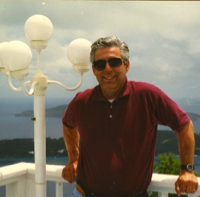
Continuing my theme of CPTED issues from our last conference and our last newsletter, I want to focus this quarter on “Speeding Drivers.” I’ll share a couple things that will provide a higher level of safety in-and-around multi-housing complexes, trailer parks, camp grounds, hotel/motel properties, shopping centers, and hospital parking lots.
Note: For those of you who couldn’t make the conference, and have no idea what I’m talking about, go to this part of my Webpage and look for a series of CPTED articles: http://www.rcorbinsecurityauthor.com/safety_tips
SLOWING CAR SPEEDERS
One of the major problems wherever there are cars in parking lots is “speeding.” Signs only work for those who feel that rules apply to them. You know what I’m talking about. How many times have you seen a driver go faster than the speed limit in a school zone…a construction zone…or any public parking lot where parked cars and pedestrians are abundant?
If you can’t make them slow down by virtue of a caution sign, here are a couple physical methods that will slow them down 99% of the time. (There are always exceptions to the rule.) Of course, these are things that the architects and builders need to install, and not anything that the average user can do after construction is finished.
Pavement Texturing: Speeders will automatically slow down when they encounter a difference in road surface. You have probably experienced this yourself while driving your car. When you go from blacktop or concrete onto gravel, or a rougher surface, your foot automatically backs off the accelerator. It’s almost a sub-conscious reactive action, and you probably don’t even think much about doing it. Bottom line is…it got you to slow down, even if just a few mph. So things like concrete stamping, use of bricks, decorative stone, and other pavement texturing concepts can be used in various locations throughout a parking lot, or on other private roadways.
Speed Bumps: Speed bumps differ from speed humps. A speed hump is basically an enlarged speed bump with a flat surface on top. Speed humps are more effective, but also more costly due to the amount of material used. Sometimes, property owners will install two speed bumps in parallel to slow down vehicles. More effective than a single bump? Yes. But again, this is doubling the installation cost and is usually avoided for that reason.
The typical speed bump design is a single, curved raised piece of material placed perpendicular to the major drive lanes of parking lots. When a driver crosses one of these, the vehicle is subjected to a fore and aft pitching motion along its lateral axis. Simply put, two tire bumps are subjected to a car passing over the bump; once for the front tires and once for the rear tires. And we’ve all probably seen people drive a little fast over a speed bump, likely because the shock absorbers are already bad and the driver doesn’t care about treating his vehicle in that manner.
However, there is a way that a single-type speed bump that can be a more effective design for reducing speeders, and still maintain the lowest cost. Here’s how. Simply install the speed bump at an angle across the drive lane or path of the roadway. In this case, a driver will sub-consciously slow down even more due to what happens to his vehicle.
Why? Because the angled speed bump causes four tire bumps; one for each tire. It also creates a dual motion of the car: a pitching fore and aft (as described above) and a lateral left-right motion along the car’s longitudinal axis. In essence, the car will rise and fall, and shake left and right as each tire crosses separately over the speed bump. It’s almost like four-wheeling in the desert, and I guarantee drivers will pass slower over this type that those typical speed bumps placed perpendicular to the drive path.
In coming articles, I will talk about some of these CPTED issues:
- Tilting Apartment Carport Covers
- Which Way Should Pool Gates Swing- Inward or Outward
- Pros and Cons of Fencing Types
Stay Safe!
–Ron Corbin
Author of Award Winning “Beyond Recognition”
www.rcorbinsecurityauthor.com
DAVID’S PORCH

I was sitting on my brother-in-law’s porch, something I was looking forward to doing. My Brother-in-law, David Ray, has a house which sits on a knoll, ridge, hill in Barnardsville, North Carolina. His house overlooks a small valley of modest houses and has a beautiful view of the surrounding mountains. A cool breeze often erases the hot of the sun and refreshes my senses. I thoroughly enjoy just sitting and reading a good book and occasionally watching as vehicles traverse the country road below. A murder of crows fly over squawking loudly. The cows, which he raises and sells loiter about and talk to each other in their own language. I have a lot of company on this porch, eight flies, a bee and a hornet. All just seem to be curious as to who I am and what I’m doing. One fly is a speed reader and walks down the entire page I am reading before I can read the first paragraph.
The great city of Washington, D.C. was where I was born and raised until my parents moved to the Maryland suburbs. We lived in Prince George’s County which borders the District of Columbia. Needless to say I have always lived in this metropolitan area and am used to the smells, the noise and closeness of people. I went to public schools, played boys’ club ball, attended a local church and had a fair share of girlfriends all of whom were locals or schoolmates. North Carolina at that time was a beach on the eastern shore, where some friends of my parents lived. We traveled, by car, to this oasis of ocean, sand and fishing at least once a year for several years. Although I would normally get badly sunburned, it was a trip I looked forward to every year.
Being an only child was lonely and I longed for attention and companionship. I worked during the summers and when I graduated, I worked full time in a department store not far from where we lived. I met a girl, who was actually a cousin of one of the guys I hung with, and we got married. I went to college, but working a job and raising a family got to be too much and I dropped out of college. By the age of 23, I had four children, all boys, and was able to buy a house in Rogers Heights, which is next to Bladensburg, Maryland. Two years later, after being laid off twice from electronics jobs, I applied for and became a Metropolitan Police Officer. Initially, I thought police work encompassed writing tickets and chasing robbers. Even still this was a big challenge for me. I lacked a great deal of self-confidence and I felt that being a police officer would either make me or break me. I loved the job and soon worked my way toward being a detective. However, the job took a toll on the marriage and the children. My wife found someone else and relinquished the children to me. Three years later we were divorced.
Babysitters became the norm. I had a list of babysitters for each of the tours of duty I worked, not to mention court time. One babysitter lived across the street and took care of the boys after school. She also watched two other kids belonging to a young woman, who I thought was very attractive. Being a detective, I conducted an investigation and simply asked the babysitter about her. This young woman was also separated, pending divorce, and I asked if the sitter would ask the young woman if she might be interested in going out on a date. To make a long story short, I dated this beautiful young woman for seven years, until she finally agreed to marry me.
Our marriage was a real struggle. As a mixed family, tensions erupted frequently. Five boys and one girl, an ex-wife, an ex-husband, and a new house created many conflicts. I started working a second job and although our finances were maintained the relationships with the children and with each other festered. Somehow we persevered and as the children got older and moved out, tensions moved out with them.
North Carolina again entered my life as my beautiful wife was from Asheville in Western North Carolina, the gateway to the great Smokey Mountains. She was raised in a little hollow known as Haw Branch. She had two sisters and a brother. Their very modest house was located in Barnardsville, North Carolina, at the foot of a mountain, about 25 miles northwest of Asheville. She was a mountain girl, but had lived in Metropolitan Washington since she was 17. We visited Barnardsville and Asheville frequently until her mother and father passed away. Only her brother remained in Barnardsville with his wife and two sons. Her two sisters had moved away to Connecticut and Florida respectively. Both her sisters died before her mother. I became quite familiar with Asheville and loved the mountains. One of our goals is to eventually move to the Asheville area after we retire. We now have eleven grandchildren and five great grandchildren.
Sitting on this porch in the latter years of my life is so comfortable. Other than our children and grandchildren, who infrequently visit, my darling wife’s family is the only family she and I have. Never having a brother, I always considered David my brother rather than my brother-in-law. We always feel welcome in her brother’s home. As expected their ways are quite different from ours. David has several hunting dogs that he has chained up about 25 yards from the house that he takes good care of. Of course he also has cattle at different locations which must be fed and cared for. He used to be a tobacco farmer until the bottom of the market fell. Biscuits are a mainstay on the table for breakfast, lunch and dinner. I had to dig into their pantry to find a toaster. Patricia, his wife, fixed us Lasagna for dinner our first night, which was really hamburger helper. They only drink water from their well and have no interest in bottled water. Patricia gets up every morning makes breakfast and prepares David’s lunch for work. He works a job for the state eight months out of the year maintaining the parks and roads along the Blue Ridge Parkway. His two sons now have children. Patricia spends most of her day babysitting their youngest boy’s daughter. David and Patricia are wonderful grandparents and cherish the presence of their grandchildren.
This wonderful porch is also a great place to simply talk about the events of the day, politics, sports or of the other mainstay in the mountains gossip. Hanging plants abound and you can generally see a rain storm coming into the valley before it actually gets there. A cold drink or a hot one adds to the ambiance of the mountain views. You hear dogs barking a distance away and occasionally rising voices of neighbors yelling at the dogs or each other. David’s house is not a mansion, but is certainly adequate for his family. Three bedrooms, a partially finished basement with another bedroom, a makeshift mechanics shop for his older boy, two baths, living room, dining room, laundry room and a porch on the back and front make for very comfortable living.
We have looked at many houses in the Asheville area and have actually bought property twice. Unfortunately both deals fell through. One property wouldn’t perk and the other was to be developed, but didn’t. My desire with any house we may eventually buy is to have a porch with as much of a view as David’s porch and to be able to share it as he does with our family.
–Joseph B. Haggerty Sr.
BUYING A FLASHLIGHT? ASK A COP. . .
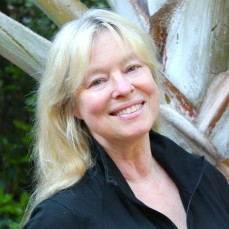
I’m at lunch with four Boston homicide detectives. When I say I’m wondering about flashlights, they all look blank. I say: You all have department issue flashlights, right? They nod. Is that what you carry? Vigorous negative shakes of all four heads. We buy our own.
A flashlight, when it is central to your work or your life may depend on it, is not a tool to be chosen lightly.
When I want to know something cop-related, I use a two step process. First, I do research. Here I start with a forum, http://www.candlepowerforums.com, and the discussion thread, “Best Flashlight for a Police Officer.” An hour later, with notes that include names like Velociraptor, T-Rex, and Void Hawk, that sound like the names of characters in an action movie, I’ve written down some plusses: Will cut through darkest tinted windows. Has a smooth, silent revolving UI. Words like “throw” and “hot spot” used by experts who know just which flashlight they prefer.
I’ve learned flashlights come with different brightness settings for different situations—low light for a quickly reading a license or doing paperwork, medium lumens or intensity for clearing a room, and high intensity for car stops where the vehicle had darkly tinted glass or for ruining the suspect’s night vision. Some flashlights even have a strobe function or come with red or blue lenses for different applications.
Many police officers take what they call the “trinity approach”–three different flashlights–primary, back-up, and the light that mounts on a weapon. Or they carry three flashlights for safety—a larger light in the car, a smaller, lighter LED flashlight on their person, and a backup in case the first two fail.
With a page of notes and newbie questions: What does UI mean and why would it be important that there be duplicate UIs, on the side and on the butt? Why did a UI need to be smooth and quiet? I turn to the officers themselves for a “mini-lecture on flashlights.” And the answers started rolling in. Staring with an explanation of “UI,” from a retired detective I’m coaching through his first mystery:
UI is a fancy way to say flashlight User Interface, or the on/off and control switch. Simply put, some flashlights have a plethora of settings, low light, medium, high and very high, also a low light red. The more settings, the more complex the light and the more times you have to press or turn the switch.
He adds an important detail: the switches need to work quietly to preserve the element of surprise.
My interview and interrogation training officer says:
There is a whole subculture on flashlights when it comes to police. I was always of the mindset that when I pushed the button, it NEEDED to come on, I wanted dependability. Back in the day when I started, guys (and gals) carried mag-lights. They always referred to them as 3C’s or 4D’s, which referred to the size and number of the batteries. A 4D was obviously 4 “D” cell batteries, which was really handy to use as a second night stick if need be. These days those are just too big and cumbersome, and don’t through enough light compared to the new LED stuff.
There are three really popular brands in the police world right now:
- Pelican 7060 LED
- Streamlight
- Surefire
I have a Pelican. They’re rechargeable plus they have a lifetime warranty. They were developed by the LAPD and they equip all their officers with them.
From a Massachusetts state police detective comes more information:
When I got on about twenty years ago, everyone got a Mag-light, a big metal heavy flashlight that guys liked because it could be used as club if need be. Everyone had that light. About ten years ago, it was more common to get a lighter and brighter flashlight. (Plus policies and procedures frowned on using the old lights as a club since it wasn’t a device officers were trained in to use on people.) Real common was a Stinger Streamlight. The old mag light was probably halogen and the newer lights were LED. Right now, a lot of guys like lights made by a company called 5.11. The lights are very small and bright and the battery lasts forever. Very bright, too.
From a retired Oakland detective familiar with my Joe Burgess police character:
Joe is an old-time cop. When he began police work, he was probably issued (as I was in 1980) a 3-cell flashlight. He went out and spent his own money (as did I) for a more powerful one, and the best one could do back them was a 5-cell Kel-lite. It was made out of aluminum, was heavy, and doubled as a club. I hit many a bad guy with mine. Although I long ago retired it, it is still in my coat closet and I’ve grabbed it when there’s a bump in the night.
Today, with LEDs, flashlights are much more powerful and smaller. Most uniform cops I know carry something about the size of the Streamlight Stinger.
http://www.streamlight.com/enus/product/product.html?pid=274 on their belt. Others carry the larger L20 model. Plainclothes officers will either have their old duty flashlight (such as the Stinger) in their bag and pull it out when needed. The really smart, savvy detectives (Boy Scout types who are always prepared) have a small light, such as a compact Surefire light http://www.lapolicegear.com/sutiulcovaou.html in their suitcoat pocket and a folding knife in the other pocket.
Uniformed cops carry bigger flashlights. Their duty belts support them, they’re brighter, hold a charge longer, and are more durable, especially if it’s necessary to rap a bad guy. Uniformed cops use their lights a lot and the lithium batteries used in many of the small compact lights are expensive, so they would opt for rechargeable lights, but many carry a small lithium-battery flashlight as a backup in case their main light runs out of juice.
And from my police sergeant cousin Peter, came this:
Of course police officers work at all hours. In addition to the dark of night, we also face the dark of daytime basements, looking under seats in cars, and factory warehouses.
Mag-lite developed a rotating head of the flashlight which adjusted the beam of light to a narrow focused spot or a broader flood area.
An issue a few years ago was bulbs. Dropping your flashlight is common, and regular bulbs would break and have to be changed. Now we are seeing powerful LED technology that give super bright light with much less power consumption. Some of the best lights ($100-$200) use the CR123 disposable lithium batteries and multiple LED bulbs. A flashlight 4 inches long and 1/2 inch thick is better than the old 3 D-cell Mag-lite.
Also we now have weapon-mounted lights coming into common use. More than half of officer-involved shootings are in low light conditions. Small batteries and LEDs are combined for lightweight lights permanently mounted on handguns with holsters that can hold the gun with attached light. The light is now on the weapon and pointed where the weapon points instead of in one hand leaving only one hand for the weapon. The same concept is in play with patrol rifles, with weapon-mounted lights or even infrared night vision lights.
Some agencies have agency-owned flashlights installed with chargers in the cars. We have large D-cell size Mag-Lites mounted in each car and a rack charger with spares. Most tactically oriented officers carry their own good small flashlight on their belt, which provided an always-present light on any shift for dark areas. The vehicle mounted light would typically be carried at night when out of the car on a call, with the officers’ own belt-carried light as a back up at that time.
So now I know—I want a flashlight that’s small, lightweight, reliable, and powerful, with a long-lasting charge, a smooth on and off function, and a bulb that won’t easily break. Preferrably rechargeable. And LED. I may want an adjustable light, depending on how I want to use it. I probably want a second flashlight in my pocket, just in case. And in case I find myself in a situation where I might confront a bad guy, I might also want one of those old time heavy weight numbers that can double as a night stick. And it’s a hefty Mag-lite that Thea picks up when she needs to go down to a dark basement in Death Warmed Over. http://amzn.to/2Arr7KV
Who knew buying a flashlight could be so complicated?
–Kate Flora
2013 and 2015 Maine Literary Award for Crime Fiction
www.kateclarkflora.com
www.mainecrimewriters.com
“Living and writing in the great state of Maine.”
COP DREAMS, WHAT HAUNTS YOU?
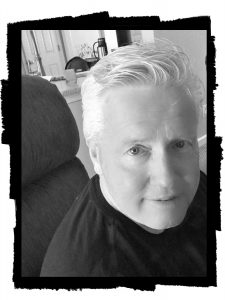
Being a cop is an exciting job. One minute you and your partner are enjoying a cup of coffee, and the next minute someone is jumping out of their vehicle firing a weapon at you. Incidents like shootings and the aftermath of traumatic occurrences leave scars that may haunt one forever. Often, these memories revisit us in the form of nightmares. As bad and scary as they are, they may reoccur for months or years after the event.
Most people who suffer a traumatic event are likely to have a nightmare after the event. A study of Vietnam vets found that 52% of combat vets with PTSD had nightmares fairly often. Just three per cent of civilians in the same study reported the same level of nightmares. Other studies of people suffering from PTSD found even more alarmingly higher rates: 71% to 96% may have nightmares. Trauma survivors are more likely to suffer from nightmares, and some may have these awful dreams several times a week.
TYPES OF DREAMS
For cops, many of the bad dreams are similar. A friend and fellow writer, JD Buck Savage, took a poll and found these five dreams topped the list:
- No matter how hard I try, I can’t pull the trigger.
- I fire my gun and the round dribbles out of the barrel.
- I need to run somewhere but I can’t move.
- I can’t get to my gun, ammo, or my holster is empty.
- I fire and fire and the rounds do nothing.
I confess that I’ve had some of the above dreams in addition to these:
- I’m no more than several feet from my adversary yet I’m unable to hit him.
- Three or four individuals are attacking me and I don’t know where my gun is.
- I see the muzzle flash, hear the loud report, and feel the impact of the round.
Psychology Today reports a huge disparity in sleep among those with PTSD related nightmares compared with those who don’t suffer from PTSD:
- Increased REM sleep activity
- Decreased total sleep time
- Increased number and duration of nocturnal awakening
- Decreased deep sleep
- Increased periodic leg movements during both REM and NREM sleep
A study found that in the USA, two-thirds of officers involved in shootings suffer moderate or severe problems, and about 70% leave the job within seven years of the incident. Cops rank third among occupations in premature death rates, and twice as many die by their own hands as are killed in the line of duty. Sleep problems because of traumatic incidents often lead to alcohol and drug abuse which can affect work performance and personal relationships. All of which lead to possible suicides.
I submit that for as many cops that are diagnosed with PTSD, there exists a similar number that are not diagnosed. Why? They fear being passed over for promotion, PTSD may make them appear weak, or a cop may think he’ll likely be fired if he’s diagnosed and the bosses find out. Thus, for those who are not diagnosed and do not receive counseling, the nightmares continue unabated.
TREATMENTS FOR PTSD NIGHTMARES
If one receives standard PTSD treatment, nightmares often get better or at least reoccur less frequently. A common treatment for nightmares is Imagery Rehearsal Therapy (IRT). The individual, while awake, changes how the nightmare ends so that it no longer upsets them. Next, the person replays repeatedly in their minds the new dream with the non-scary ending. The research shows IRT can reduce the frequency of the nightmares. Also, high levels of sleep-disordered breathing have been seen in trauma survivors. In one study, patients given a treatment to improve their breathing during sleep no longer had violent, scary dreams.
Dr. Barry Krakow is the director of the Maimonides International Nightmare Treatment Center in Albuquerque, N.M. He says, “Studies show that 70-80% of people who try IRT get significant relief.” Krakow is one of the researchers who worked on the JAMA study and the author of four books on sleep medicine. Both easy to learn and use, IRT can be mastered in a few hours. Then one only need to use the technique for a few minutes a day for a matter of days or weeks.
Dr. Krakow describes a 3-Step approach to nightmare control:
- Briefly describe a recent nightmare.
- Think of a way to change the nightmare.
- Visit the altered version of the nightmare each day by painting a mental picture of it.
Sound simple? It is, and according to Dr. Krakow when he explains it to his patients, “it’s almost like they think the process is disrespecting them.”
You may wonder, “Can’t I just take a pill?” Unfortunately, not much research exists on the use of drugs to treat nightmares from trauma. A drug named ‘prazosin’ has been found to reduce symptoms, and more research on the drug is being conducted.
Nightmares can be costly in the long run, ruining careers and relationships. Not getting sufficient sleep or quality sleep is harmful. Cops need to be on top of their game every second they’re on the street. If you have problems with nightmares, don’t wait until it’s too late. Get help, NOW.
–John Wills
Award-winning Author/Freelance Writer
Website: http://jwillsbooks.com/
Facebook: https://www.facebook.com/johnmwills
Twitter: https://twitter.com/johnmwills
Member: National Book Critics Circle
Latest novel: THE STORM
Read my articles on Officer.com and Law Enforcement Technology
APPRECIATING FAMILY THIS SEASON

The unfortunate tragedy of recent shootings leaves many in law enforcement practicing active-shooter scenarios and scrambling for answers. We all pray that tragedies like this don’t come to our towns but we must prepare as if they will. For most of us, the holidays are a time for family, friends and reflective compassion—a time to detach from needless violence and focus on our blessings. But for some, the holidays are a memory of abuse, trauma and neglect. Charles Manson just died (good riddance). I was not surprised to read about the trauma and neglect he was exposed to as a kid. I had never studied this animal—didn’t want to know anything about him, but now that I do I can say that his childhood exposure to abuse was predictable.
Politics and political posturing aside, we don’t arrive on this planet wired for abuse, but, sadly, our brains assimilate an abusive environment for neurologically built-in primitive survival and adaptability. While not all kids exposed to abuse go on the become abusers—many do. An interesting article in the Washington Post (by Rachel Louise Snyder) discusses the link between DV-related strangulation and shooting violence. She cites well-known advocate Gael Strack, CEO of the Training Institute on Strangulation Prevention in San Diego as saying: “ … the mere presence of strangulation in a situation of domestic abuse increases the chances of homicide sevenfold.”
Specialized law enforcement training in domestic violence improves officer safety as well as the delivery of services, and makes our towns safer for victims and families. Family is the foundation influence for a civil, productive society—or the foundational influence for horrific abuse and needless violence. We do arrive on this planet wired to look to our family for love, guidance and support. If we don’t get it there, we may look for it from extended family, friends, and even first responders who ae called to intervene.
This holiday season I am mindful of this familial influence, and I appreciate all of the wonderful families out there doing the right thing. I am also mindful of those brave men and women who are our first responders—who intervene when a crisis calls, and who their best to address the realities of family violence. They’ve had their hands full this year. This season, I want to embrace this mindfulness. I want to appreciate those loving families doing the best they can and to advocate for victims and children not so lucky. I am truly blessed.
–David Cropp,
Award winning writer: https://policewriter.com/wordpress/
“Valley Heat” http://oaktreebooks.com/
Website: http://themidnitewriter.com/
Amazon: http://www.amazon.com/Dave-Cropp/e/B00EBUL90A
Police One News.com: http://www.policeone.com/columnists/David-Cropp/
JOBS FOR RETIRED COPS

A police friend of mind challenged me about second careers for street cops. “There aren’t many jobs for retired police officers,” he said. That got me thinking about what opportunities are out there other than the ones I pursued.
“It depends on what you want to do,” a retired police officer said when I asked him about the best jobs for retired cops. That makes sense. We each have our own interests and ideas for what to do when our police career ends. Some want a full time new career, others a part-time job.
I looked around to see where former cops are working and talked to some that have gone on to second careers.
These are jobs I found retired cops working at right now.. After they retired from policing some started their own investigations firms. Others hired on with PI companies that were already established.
Security: After a full police career, a natural second career would be in co
Private Investigator: This is an obvious follow-up to a career in police investigations. Many private investigators got their start in police organizations corporate security. But a friend of mine who did so reminded me the job is much more than rattling door knobs now. He took some training and got certified as a security professional. If this field interests you, check out ASIS International for all the latest in security training and certification at https://www.asisonline.org/Pages/default.aspx
Workers’ Compensation or Insurance Investigations: Two areas of investigation. One is fraud-related investigating suspicious compensation claims. The other is fatal and serious injury investigations in the workplace. I worked in this field after my police career and many of our investigators were retired police officers.
Author/Speaker: Who has better stories than cops? There’s a great organization called the Public Safety Writers Association where police authors can find support and share their experiences. Here’s a link. https://policewriter.com/
Realtor: A friend of mine became a realtor after he retired from policing. He told me that you’d be surprised about how many of your police skills are used in dealing with people selling or purchasing a home. He said either of those transactions can be very stressful for those involved and sometimes it takes all his police skills to keep them calm as they go through it.
College Instructor: For all you police officers who are involved in training, this is a good next stop after your police career, especially if you have academic credentials.
Human Resources Advisor: A retired police officer I know got started in police HR and went on from there to work in corporate HR. He did some extra HR training before he left police work.
Long-haul Truck Driver: A pal of mine retired from policing and had always had a dream to be a long-haul truck driver. He took some training after retiring from policing and spent several years driving all over North America. For him it was living the dream.
VIP Security/Chauffer/Personal Driver: If you’re a police officer you’ll be able to see the connection between your police skills and this type of work. Executive protection is an interesting part of the security business.
Small Ferry Boat Operator: A senior police executive wanted to do something completely different from the endless demands of leading a police department. This job certainly meets that need.
A few more ways retired police have made a living: rancher, gun smith, therapist for first responders, high school sports coach, doorman at a high-end hotel, and chief of a smaller department.
“I thought it was the last job I’d ever have,” said Tim Dees, a retired police officer. Then he went on to eight different jobs after he left policing.
What do you want to do? Take some time when you’re still in your police career to think about it. A lot of street cops want to work after they retire, but not under the same working conditions a police officer puts up with. Plan ahead. Get some idea what you want to do. Train and upgrade your credentials if necessary. There’s a second career out there if you want it.
–John Eldridge
Retired police officer
Author of Second Careers for Street Cops
MEMBER NEWS
Quinton Peterson has a new book out, The Voynich Gambit.
“The Voynich Gambit is a meticulously drawn-out caper that retains suspense even during the planning stage.” – Kirkus Reviews
Special Police Officer Lt. Norman Blalock, who has been guarding the treasures of the Folger Shakespeare Library for 25 years, has been coerced into a plot to heist from the Folger Museum “the most mysterious book in the world,” the Voynich Manuscript, on loan from Yale University. Under threat of suffering the consequences of their involvement in the botched plot to heist another priceless artifact from the Folger underground bank vault several months earlier, Blalock and his partner-in-crime Kavitha Netram are once again under the thumb of nefarious businessman Rupert Whyte, and have no choice but to play along.
Shots Fired: The misunderstandings, misconceptions, and myths about police shootings
Joseph K Loughlin and Kate Clark Flora
Skyhorse Publishing
ISBN: 978-1-5107-2276-7
Today’s media is filled with discussions about officer-involved shootings. Too often missing from that discussion are the police offers’ voices and the reality of what happens in actual shooting incidents. Through interviews with involved officers, this book addresses common myths and misunderstandings about these shootings.
Shots Fired is a journey “behind the shield” which highlights the experiences of real human beings in the line of fire. It explores true events through the participant’s own eyes and takes readers inside the minds of officers during the actual event.
Along with the intimate, in-depth explorations of the incidents themselves, the book touches the aftermath of police-involved shootings–the debriefings, internal and external investigations, and psychological evaluations. It challenges many commonly held assumptions created by the media such as the meaning of “unarmed” and why the police can’t just “shoot him in the leg,” creating an understanding that reaches beyond slogans such as “hands up, don’t shoot.”
And also from Kate Flora:
Death Warmed Over – the 8th Thea Kozak mystery
ISBN: 978-1-61417-969-6
Arriving to view what will hopefully be her dream home, Thea Kozak finds her real estate agent, Ginger Stevens, tied to a chair, surrounded by fiery space heaters. Just before the woman dies, she utters the indistinct words: Bobby. So Long. Safe. Sorry.
Than a stranger, claiming to be Ginger’s boyfriend, corners Thea, demanding a package that Ginger gave her, a package Thea never received.
Determined to get justice for Ginger, Thea begins her own investigation. Ginger’s colleagues know little about her, her apartment has been sanitized, and Ginger Stevens in the name of a child who died many years ago. The police no idea who real-estate agent Ginger Stevens really is.
Thea is sure the two men following her know Ginger’s true identity, and will stop at nothing to keep her from uncovering the truth behind the woman’s dying words.
***
Another Kind of Hero by Lynn Hess
Desert Breeze Publishing
Publishing Date: September, 2017
A casket full of drugs and money inside the Pick’n Pay in Forsyth, Georgia, plus a ghost, put dissimilar sisters and a DEA agent in jeopardy.
The Kendall sisters, Helen and Mavis, are at odds on how to help a “young thing” protect herself and her job at the Pick’n Pay in Forsyth, Georgia. Cameras are installed and calamities happen even before DEA Agent Daniel McMurphy, AKA Dewey Blackmon, arrives on a motorcycle and complicates matters with his spunky African-American truck-driver girlfriend, Cora Justin Dupont. Wanda, the ghost, acts as an opinionated narrator with good intentions and helps the sisters pass along intel to Dewey about a drug pipeline operating off I-75. A funeral parlor director and his ex-wife are just two of the “bad guys” Wanda can hear talking through the phone lines and portable phones. Small-town America is rocking and rolling in criminal activity in Forsyth, Georgia, and there isn’t any shortage of murders, but good-hearted people, plus a ghost, save the day.
Member Lynn Hess is the 2015 First Place Winner, Oak Tree Press, Cop Tales for her mystery, “Well of Rage”. She has a law enforcement background and writes her character-driven stories with an ear for dialogue and an affinity for plot twists set in rich southern culture. She empowers and adds humor when she can and sheds light on the gray layers of life. She is a performance artist and member of Beacon Dance, Atlanta InterPlay SoulPrint Players, and Dancing Flowers for Peace. Her flower persona is “The Dandelion”. She lives in Stone Mountain.
***
And this note came in from member, Pete Klismet:
Last month I agreed to and signed a contract with a publisher in China! Of all places. It was an interesting contrivance of events which came together, but my Australian publisher of FBI Diary: Profiles of Evil was contacted by an Asian publisher, who offered me a ‘first print’ contract for 6,000 books.
And yes, of course they’re translating it into Chinese. I don’t know if that’s done yet, but I’m excited about the prospects. Here’s a copy of the new front cover with some Chinese on the front. I have no clue what it says!
